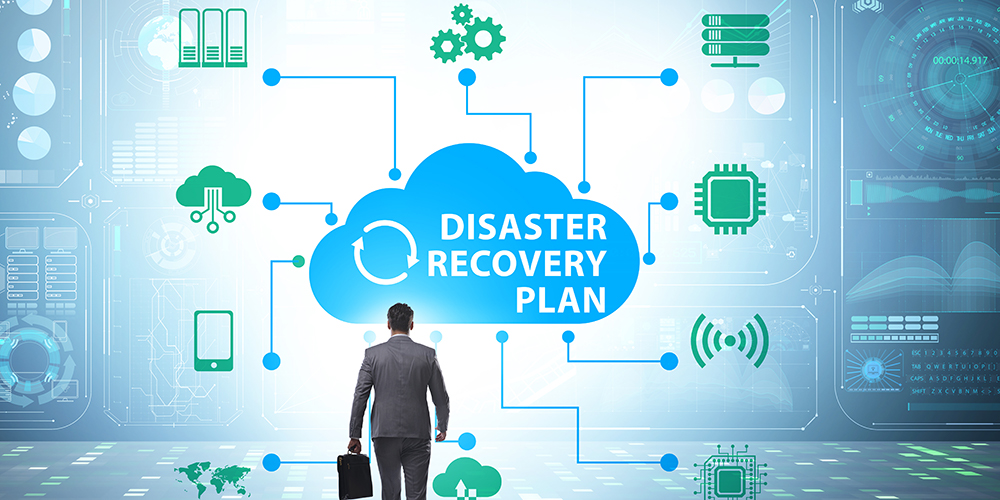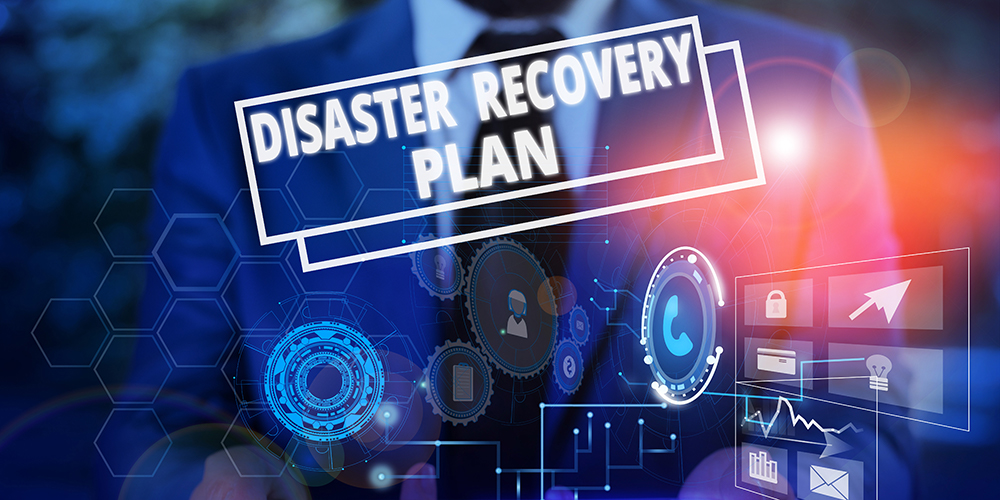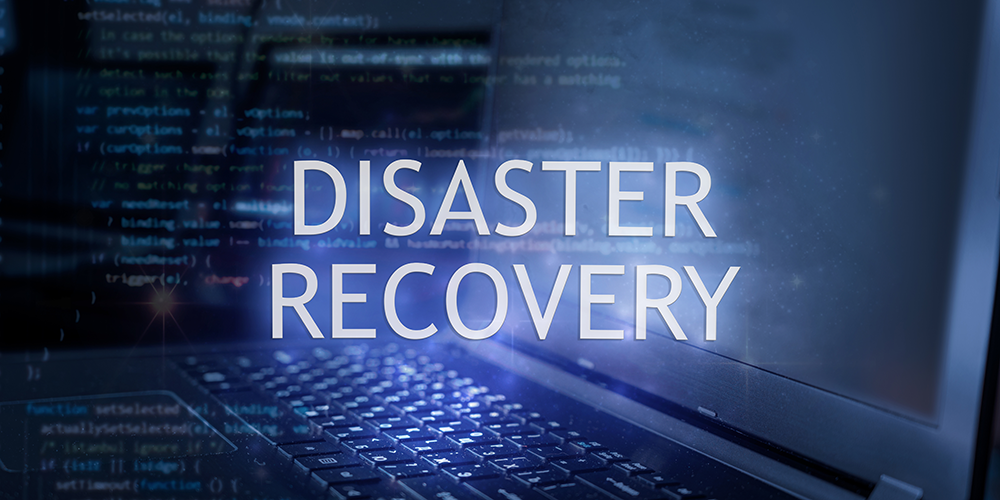
Jun 7, 2024 | SMB Technology, SMB Technology, SMB Technology, SMB Technology, Technology News
We are entering the seasons of storms (including hurricanes and tornadoes), wildfires and other possible disasters. Even a power outage of short duration can affect your business. What if you ship orders because of an interruption in your order processing service, for example? Or what about a bigger disaster, that takes your business out of operation for days or weeks? Read on to learn more about the importance of disaster preparedness for keeping your business running. What a Disaster Recovery Plan is and Why You Need One Having a plan does seem obvious, doesn’t it? Yet many companies may not have one in place. A definition of a DRP is a structured document describing how your company can resolve data loss and get back to functionality during and after a disaster. Even a brief power outage that may seem like just an inconvenience can strongly impact your business. Downtime can be costly to your bottom line and to your reputation. Advantages of Having a Plan A key benefit is knowing what to do when a disaster happens, and swinging into action immediately. What’s more, a plan will give you confidence, and give others like workers and customers confidence in you. Customers will know that you’re keeping their data safe from loss or compromise, because you’ve backed up that data. You’ll know how much to budget for recovery from disaster, and which systems need to be back up and running. Getting Started: Planning and Documentation A conversation gets the ball rolling. Discussing what might happen in the event of a disaster, and what mission-critical systems...

Oct 5, 2023 | SMB Technology, SMB Technology, SMB Technology, SMB Technology, Technology News
With the recent wildfires in Maui, disaster preparedness is (or should be) once again top of mind. Aside from the physical recovery of businesses, integrity of their data (the lifeblood of the business) is at stake. Even if you think you’re prepared, you may not be. Read on to learn more about where to start in your disaster recovery planning. Consequences of Not Being Prepared The disaster may be twofold, as discovered in Maui. Not only did brush fires start, but winds from Hurricane Dora blasted part of the island, resulting in an even worse catastrophe. Businesses and homes were burned to the ground, and work stopped. Do you know what your business would do during an outage, let alone a disaster like Hawaii’s? And why limit preparedness to major disasters? These days, anything can happen–even a worker unwittingly clicking on a link in a phishing email, giving away confidential information. Disasters can be big, or stem from small actions. Data can be lost or stolen, resulting in regulatory fines and loss of confidence in your business. Bad actors are always looking for ways to catch businesses off guard; the cyber damage can last even longer than physical damage. Where to Begin Perhaps you’re overwhelmed by the process, wondering how to even get started. A good place to start is doing an audit of your current preparedness level. What systems, data and applications need to be up and running first, to keep your business operating? Which ones can be delayed a bit while you get your bearings? A thorough review of business-critical functions can show...

Jul 11, 2023 | SMB Technology, SMB Technology, SMB Technology, SMB Technology, Technology News
As recent events like severe storms demonstrate, disasters will occur. But they needn’t sideline your business. Read more to find out about developing a plan to mitigate the effects of disasters on your company’s data and network. The Cost of Failing to Plan The cost of downtime is $5,600 per minute! Multiply that out, and you could be paying hundreds of thousands or even millions for lost revenue, lost wages (or overtime when systems come back online), or fines for regulatory non-compliance. Even if unplanned downtime is just an hour, the cost is steep. The revenue you lose because your customers can’t purchase items on your website, and even missed deadlines for projects, can hurt your bottom line and your reputation with customers. Data breaches from cyberattacks can reduce your customers’ trust as well, and possibly result in fines for regulatory non-compliance. By not having a plan, you may waste valuable time because you don’t know what to do first. Developing a Business Continuity/Disaster Recovery Plan A business continuity/disaster recovery plan is vital in protecting your company. The disaster recovery aspect deals with how your business will bounce back from a natural or manmade disaster. How do you develop your plan? A good first step is assessing the current state of your network as well as the risks your company faces. Do your systems have any holes where malware can enter or places where data might become bottlenecked? Do you have redundancy/failover so that if one part of your network is down, another part can pick up the traffic? What about equipment you have on-premise–is...

Nov 2, 2022 | SMB Technology, SMB Technology, SMB Technology, SMB Technology, Technology News
Any time of year, a disaster can happen, disrupting business operations and even threatening your company itself. Statistics show that some small to medium-size businesses close after a disaster; even some of those that reopen may be out of business in a year. Having a plan for disaster recovery can help your business defy the statistics. Read on to learn more about preserving your company’s data, reputation and bottom line by having a disaster recovery plan in place. Why You Need a Disaster Recovery Plan A Disaster Recovery (DR) plan outlines how to protect your data and other technological assets during and after a disaster. Since data is the lifeblood of your business, a DR plan can make a difference between staying in business and having to close. In the shorter term, it can save you money that you might lose from an unacceptable amount of downtime. Costs can escalate to $100,000 per hour from an infrastructure failure, and a critical application failure can cost up to $1 million. Aside from financial damage, a data breach resulting from a disaster can cost a business its reputation. Apart from cyber threats that affect any organization, your location may be subject to natural hazards like fires, floods or earthquakes. Even equipment failures resulting in unacceptable downtime can be costly. Disaster Recovery is Part of an Overall Business Continuity Plan While a Business Continuity (BC) is an overall plan for keeping your business going during and after a disaster, a Disaster Recovery plan deals with protecting your company’s data from loss and compromise. It’s a part of your...

Feb 7, 2022 | SMB Technology, SMB Technology, SMB Technology, SMB Technology, Technology News
What would your company do when faced with a disaster? For example, what would happen if a fire damaged your physical headquarters? And what if a cyberattack compromised your network with its data and applications? Even a short power outage can impact your company’s business operations. Read on to learn more about how a disaster recovery plan can help you protect your company’s technology assets and recover from a disaster. The Importance of a Disaster Recovery Plan Having a detailed disaster recovery plan (DR) for how to proceed during a disaster can make the difference in how well your company recovers, helping you avoid costly downtime and even fines for failure to comply with industry regulations. With this detailed, written plan in effect, your company can stay running, or get back to running, as soon as possible–protecting you from the loss of revenue and reputation resulting from an extended outage or data breach. Key Metrics for a Disaster Recovery Plan According to an article from CompTIA, two key metrics will help you draw up a plan to recover from a disaster, either natural or man-made. The Recovery Point Objective (RPO) defines how much data or service time can be lost before consequences become unacceptable. This objective should be considered ahead of time. For example, what outage duration is acceptable before legal and financial consequences become a reality? How much data can you afford to risk losing? The RPO will determine how often you backup your data, for instance. As far as data goes, what is mission-critical and what can you back up less frequently? With...






